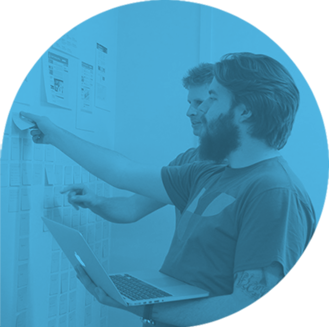Use the active voice.
Active sentences communicate messages clearly and powerfully. Readers find them much easier to
understand! In active sentences, the subject does the action that’s described by the verb.
In contrast, passive sentences are awkward, vague and wordy. Here, the subject is acted upon by
the verb. Only use these sparingly!
Address the reader as 'you'.
It sounds like a little change! But using ‘you’ makes readers feel like we are speaking directly
to them. This encourages them to believe our ideas are relevant to them, or take action.
Avoid duplication and repetition.
Only write if you have something fresh and interesting to say. Don’t duplicate information
between paragraphs or labour your point.
Wherever possible, show, don’t tell.
It’s easy to simply assert something is true. Instead, aim to provide evidence or examples that
illustrate the point.
Be concise.
Use contractions, such as don’t and can’t. And look for the shortest way to say something.
-
We are not able to…
We can’t…
Avoid repeating yourself within a sentence. For example, this one doesn’t need the word ‘new’:
Be as clear and precise as possible.
Don’t leave it to the reader to try and figure out what you are talking about. Content should be
precise and informative, rather
than vague and wishy-washy. Get straight to the point.
-
We have expertise across multiple
devices.
We design websites that are easy-to-use on mobile phones, tablets and computers.
Avoid ambiguous buzzwords
These phrases can mean different things to different people, or are often mocked. Here’s an
example with potential alternatives. The best would depend on the context.
-
Actionable
practical
usable
valuable
Don’t be clumsy.
Avoid repetition or using derivatives of the same word in the same sentence or paragraph. It’s
clumsy!
Avoid using long complex sentences.
In general, keep sentences short, broken up with the occasional longer sentence. Don’t use too
many very short sentences in a row. It is boring for the reader. They create a stern staccato
effect. You’re experiencing that now!
Above all, avoid long sentences with too many sub-clauses. Readers will trip over the phrasing
and miss key ideas.
-
In 2012, which was a pivotal year for our company, we doubled our staff to 30, while
moving into a purpose-built office in Elstree,
which enabled us to take on seven new clients.
2012 was a pivotal year for our company. We doubled our staff to 30, moved into a
purpose-built office in Elstree and won seven new clients.
Refer to companies right.
On our own website, please refer to Cyber-Duck as ‘we’ and ‘our’ team, agency or services. Case
studies or blogs may refer to other companies. So, mention our agency’s full name so it’s clear
which one is discussed. Remember companies are singular entities. Always give users a quick
snapshot of what other companies do when they are first mentioned.
Don't use double negatives.
These will either confuse readers or make them wince. Two negatives make a positive, rather than
creating emphasis!
-
It wasn’t unnecessary
It was necessary
Expand abbreviations.
Just like jargon, these exclude readers who aren’t aware of what the contraction means. This is
true even if the term is well-known inside one discipline! Please expand and define the term
briefly first. Then abbreviate it afterwards.
-
Ethan Marcotte, responsible for the term Responsive Web Design (RWD), closed the talks
with a very inspiring presentation about the
challenges of today’s web development scenarios.
Ethan Marcotte closed the talks with an inspiring presentation about today’s responsive
web design (RWD) challenges. RWD is a powerful way to create mobile-friendly websites!
They adapt to display best on devices of all shapes and sizes.
Explain technical terms and jargon.
Avoid using technical terms and jargon without explaining what you mean on first usage. Insert a
one-line description of what the term means to you, and place abbreviations in brackets. This
means your content will be accessible for readers of different levels, without reducing the
depth of your expertise.
Where possible, use the language clients and prospects are searching for. Use Google Trends to
check the popularity of key terms. For example, the Internet of Things (IoT) graph shows
interest has grown dramatically in the last month.
Apply number conventions.
Please write whole numbers between one and ten. Write in numerical form from 11 upwards. Most
newspapers use this convention! But avoid using too many digits. Numbers above 999,999 should be
written as 1 million, 1.1 million, 2 billion etc.
Use bullet points.
These are a great way to break up content with digestible lists. But be consistent. Always use a
colon after the introductory text and start each bullet with a capital letter. Be consistent!
Use similar sentence structure throughout the list.
Some bulleted lists contain short sentences that finish the introduction sentence. Ensure these
‘make sense’ when read after the introduction, and don’t use a full stop. Others contain full
sentences and should retain the full stop.
- Implementing a breadcrumb trail on all landing pages
- Creating a clean and crisp navigation for your website










